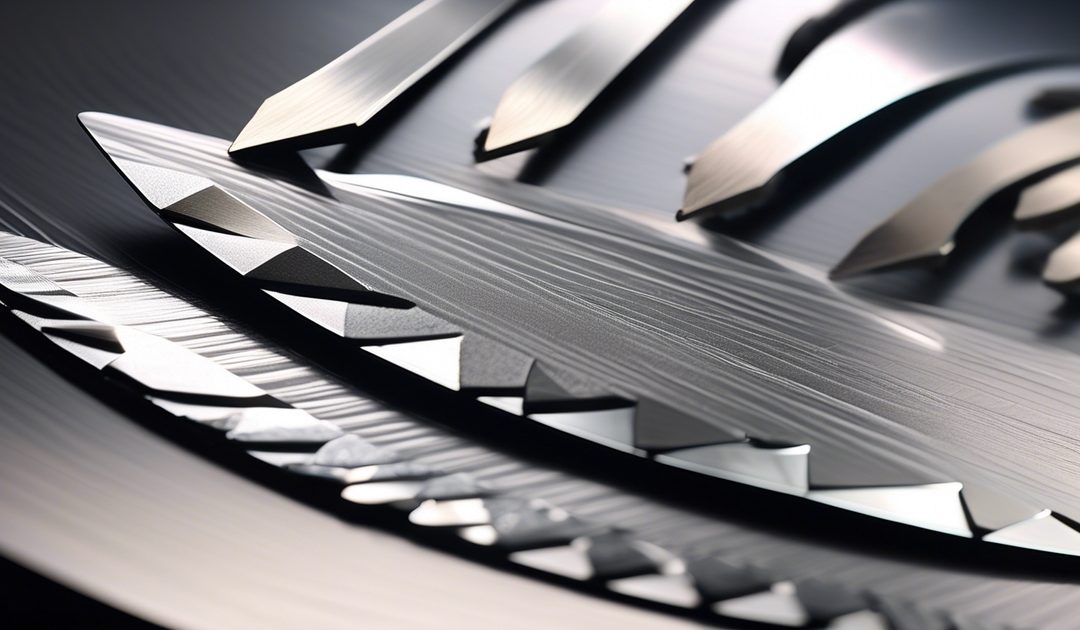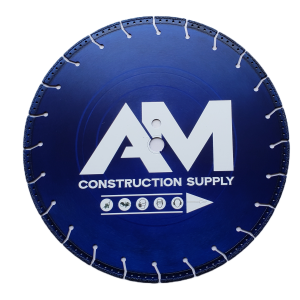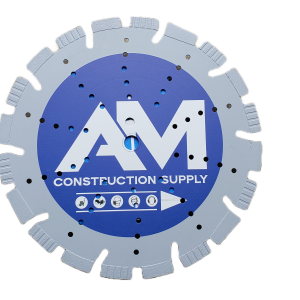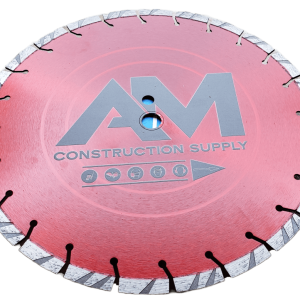Choosing the right diamond blade is crucial for achieving precise and efficient cutting results. Whether you’re a professional contractor or a DIY enthusiast, selecting the best diamond blade for your project can be daunting. This blog post will provide comprehensive guidance on how to choose the perfect diamond blade tailored to your specific cutting needs. From understanding the different types of diamond blades available to considering factors such as material composition, size, and application, this post will equip you with essential knowledge for informed decision-making.
Considering the significant investment involved in purchasing a diamond blade and its impact on the quality of your work, making an informed choice is paramount. By delving into key considerations and practical tips, readers will gain valuable insights into selecting the most suitable diamond blade for their projects.
Key Takeaways
- Understanding the types of diamond blades and their specific applications is crucial for choosing the right one for your cutting needs.
- Assess the materials you will be cutting to determine the appropriate blade features such as bond hardness and diamond concentration.
- Consider blade selection criteria including the material composition, blade size, and cutting speed to ensure optimal performance.
- Evaluating blade quality involves examining factors like diamond retention, segment design, and the manufacturer’s reputation for consistency.
- Match the blade to the saw type, ensuring compatibility and maximizing safety and efficiency during cutting operations.
- When considering the cutting job size, factor in the depth and scale of the project to select a blade that can handle the workload effectively.
Understanding Diamond Blades
Blade Types
Diamond blades come in different types for various cutting needs. Segmented diamond blades are great for fast cutting, ideal for materials like concrete and masonry. They have gullets between the segments to help with debris removal. On the other hand, continuous rim blades are perfect for smooth cuts on delicate materials like tiles or porcelain. These blades have a continuous edge with no gaps, providing precise and chip-free cuts. Lastly, turbo blades offer versatility as they can handle a wide range of materials including concrete, brick, and stone.
For instance, if you’re working on a project that involves cutting through tough concrete or bricks quickly and efficiently, using a segmented diamond blade would be the best choice due to its design that allows faster material removal.
On the contrary, when precision is crucial such as when cutting ceramic tiles or porcelain without chipping or cracking them during the process, opting for a continuous rim diamond blade is essential to achieve clean and smooth cuts.
Blade Components
Understanding the components of diamond blades helps in making an informed decision when choosing one. The steel core provides stability and support to the entire blade structure while ensuring straight cuts without bending or flexing during use. Meanwhile, diamond crystals are embedded in the metal matrix of the blade’s rim or segments which actually do the cutting work by abrading through hard materials effectively.
For example: The steel core acts as a backbone that maintains rigidity throughout usage preventing wobbling while operating at high speeds which could result in uneven cuts otherwise.
The bonding material used in manufacturing these tools plays an important role too; it secures those tiny diamonds onto their positions within each segment allowing them to remain intact even under extreme pressure exerted during heavy-duty applications such as slicing through dense granite countertops.
Cutting Applications
Different types of diamond blades cater to specific cutting applications across various materials. Masonry tasks like bricklaying projects often require efficient tools designed specifically for this purpose hence utilizing segmented diamond blades becomes crucial here due to their ability to swiftly cut through hard surfaces without wearing out quickly.
Assessing Cutting Materials
Concrete Cutting
When cutting concrete, it’s essential to use segmented blades. These blades have gaps between the segments, allowing better debris removal. Opt for wet cutting to minimize dust, and consider blade diameter based on the required depth of cut.
For example:
- Segmented blades are suitable for concrete due to their efficient debris removal.
- Wet cutting reduces dust significantly, making it a cleaner option.
Brick Cutting
Brick cutting requires either segmented or turbo blades. Similar to concrete cutting, wet cutting is beneficial in reducing dust particles and extending blade life. Select the appropriate blade size according to the thickness of the brick.
For instance:
- Turbo blades can be used for faster cuts in bricks but may generate more heat than segmented ones.
- Wet cutting helps control dust when working with bricks.
Asphalt Cutting
When dealing with asphalt, both segmented and continuous rim diamond blades are suitable options. To prevent overheating, opt for wet cutting whenever possible. Consider blade width based on the thickness of the asphalt.
Consider this:
- Continuous rim blades provide smoother cuts in asphalt due to their design.
- Wet cutting is crucial for preventing excessive heat buildup during asphalt cutting.
Sandstone Cutting
For sandstone materials, continuous rim diamond blades are ideal as they help minimize chipping during cuts. Utilizing wet cutting techniques further aids in achieving clean and precise cuts while using smaller blade sizes enhances precision.
Take note:
- Continuous rim diamond blades offer cleaner cuts by minimizing chipping in sandstone.
- Smaller blade sizes enable greater precision when working with sandstone materials.
Blade Selection Criteria
Material Compatibility
When choosing a diamond blade, it’s crucial to match the blade type to the material hardness. For softer materials like asphalt, a blade with a softer bond is suitable. Conversely, harder materials such as concrete require a harder bonded blade. Consider the abrasive properties of the material; for instance, highly abrasive materials like green concrete necessitate blades designed specifically for such applications. Adjusting cutting technique based on material density and blade life is also essential; dense materials may require slower cutting speeds and more frequent dressing of the diamond segments.
Desired Cutting Speed
To achieve the desired cutting speed, it’s important to consider certain factors when selecting a diamond blade. Choosing high diamond concentration can significantly enhance cutting speed, making it ideal for projects requiring efficiency and productivity. Opting for larger segments on the blade can also increase speed by allowing more surface contact during cutting. Adjusting feed rate and pressure based on material being cut is crucial in achieving optimal cutting speed while maintaining precision and quality.
Wet vs Dry Cutting
When deciding between wet and dry cutting methods with your diamond blade, there are several considerations to keep in mind. Wet cutting reduces heat and dust during operation, contributing to improved safety and visibility at job sites while minimizing potential health hazards associated with dust inhalation. On the other hand, dry cutting offers convenience and portability since it eliminates reliance on water sources or drainage systems during operation. It’s important to consider environmental impact as well when choosing between wet and dry methods; wet cutting may involve water usage that requires proper disposal measures whereas dry methods do not have this requirement.
Evaluating Blade Quality
Diamond Concentration
When choosing a diamond blade, it’s crucial to consider the diamond concentration. A higher diamond concentration significantly increases the blade’s lifespan. This is especially important when cutting through hard materials like concrete or stone. Conversely, a lower diamond concentration might be suitable for softer materials such as asphalt or green concrete. It’s essential to match the diamond concentration with the specific application requirements.
For instance, if someone needs to cut through reinforced concrete, they should opt for a diamond blade with high diamond concentration. On the other hand, if they are working on an asphalt project, a lower diamond concentration would suffice.
Bond Hardness
Another critical factor in evaluating blade quality is considering the bond hardness. The bond hardness of a blade should be matched to the material abrasiveness being cut. For harder materials like granite or porcelain tile, a softer bond is more suitable as it allows for more exposure of diamonds during cutting. Conversely, when dealing with softer materials such as green concrete or brick pavers, opting for a harder bond is ideal.
To illustrate further, when cutting abrasive materials like porcelain tile that require precision and finesse without chipping or cracking, using blades with softer bonds ensures efficient and clean cuts. However, if one needs to cut through soft but abrasive materials like limestone efficiently and without excessive wear on the blade edge, then selecting blades with harder bonds would be beneficial.
Matching Blade to Saw Type
Handheld Saws
When using handheld saws, it’s essential to choose smaller diameter blades. These blades are better suited for the compact size and maneuverability of handheld saws, allowing for easier control and precision during cutting. Opting for a continuous rim blade is also crucial as it provides smooth and precise cuts, making it ideal for materials like ceramic or porcelain tiles. Considering wet cutting can be beneficial as it helps in controlling dust and preventing the blade from overheating during operation.
For instance:
- If you have a small handheld tile saw, choosing a 4-inch diamond blade will enable you to make accurate cuts on ceramic tiles.
- When working with concrete blocks using a handheld masonry saw, selecting a continuous rim diamond blade will ensure clean and precise cuts.
Table Saws
When utilizing table saws, selecting larger diameter blades is more suitable due to the stationary nature of these tools. The larger size facilitates efficient cutting over larger surface areas when compared to smaller blades. It’s also important to consider using either segmented or turbo blades, as they are specifically designed for use on table saws, ensuring faster and more effective cutting performance.
Moreover:
- For cutting through thick granite slabs on a table wet saw, opting for a 10-inch segmented diamond blade will provide quick and smooth results.
- When working with marble countertops using a table-mounted circular saw, choosing a turbo diamond blade will help achieve efficient and precise cuts.
In addition: It’s vital to ensure proper ventilation when operating table saws indoors due to the potential buildup of dust particles that could pose health risks if inhaled over extended periods.
Considering the Cutting Job Size
Small Projects
For small projects, it’s crucial to select smaller diameter blades. These blades are ideal for tasks like cutting tiles, ceramics, or small masonry work. The smaller size ensures precision and control during the cutting process.
Continuous rim blades are perfect for delicate materials as they provide clean cuts without chipping or damaging the surface. When working on intricate designs or fragile materials, such as porcelain tiles, a continuous rim blade is essential.
When working on small projects indoors, it’s advisable to consider wet cutting. This method helps maintain cleanliness in the work area by minimizing dust and debris. It also prevents overheating of the blade, ensuring its longevity.
Large Scale Operations
In large-scale operations, it’s essential to utilize larger diameter blades that can handle extensive cutting jobs efficiently. These larger blades are suitable for heavy-duty tasks such as cutting concrete slabs or asphalt pavements.
Segmented or turbo blades are highly efficient in large-scale operations due to their ability to cut through tough materials quickly and effectively. Their design allows for faster material removal and better cooling of the blade during prolonged use.
Implementing a wet cutting system is vital in industrial settings where large-scale operations take place regularly. This system helps manage dust levels significantly, creating a safer and healthier environment for workers while reducing cleanup efforts after each job.
Maintenance for Longevity
Cleaning Practices
To ensure a long lifespan and optimal performance of your diamond blade, it’s crucial to follow proper cleaning practices. After each use, make sure to clean the blade thoroughly to remove any debris that may have accumulated during cutting. Use a wire brush to eliminate stubborn residues from the blade’s surface, ensuring that it remains in top condition for future use.
Once cleaned, store the blades in a dry location to prevent corrosion and maintain their cutting efficiency. This step is essential for preserving the blade’s life and preventing any potential damage caused by moisture or environmental factors.
Storage Tips
Maintaining a dry environment is key. Storing them in a place where they won’t be exposed to moisture will help prevent rusting and extend their lifespan significantly. Keeping the blades in their original packaging or protective cases can provide an extra layer of protection against external elements that could potentially affect their performance.
It’s also important to avoid stacking heavy objects on top of stored blades as this could lead to deformation or damage over time. By following these storage tips diligently, you can ensure that your diamond blades remain in optimal condition for longer periods without compromising on quality or durability.
Usage Tips for Efficiency
Operating Speeds
When using a diamond blade, it’s crucial to adhere to the manufacturer’s recommended operating speeds. This ensures optimal performance and longevity of the blade. Adjusting the feed rate and pressure based on the material being cut is also essential. For instance, cutting harder materials may require slower feed rates and lighter pressure compared to softer materials.
Monitoring the blade temperature during operation is vital to prevent overheating, which can lead to premature wear or even damage. If the blade becomes excessively hot, it’s important to stop cutting and allow it to cool down before resuming.
Cooling Techniques
For wet cutting, utilizing water cooling systems can significantly enhance efficiency while minimizing heat-related issues. These systems help dissipate heat generated during cutting, thereby extending the lifespan of the diamond blade.
During dry cutting, taking intermittent breaks is advisable as it prevents overheating by allowing both the material and blade to cool down periodically. Applying coolants or lubricants when necessary can aid in reducing friction and controlling temperatures during operation.
Recognizing Wear Patterns
Blade Deterioration Signs
When choosing a diamond blade, it’s crucial to recognize the signs of wear and tear. Loss of sharpness is one key indicator that the diamonds on the blade’s edge are wearing out. As the diamonds become dull, they lose their cutting efficiency, resulting in slower cutting speeds and increased material damage. Look for cracks or warping on the blade surface as these can indicate structural damage. Excessive vibration during operation may signal misalignment or imbalance issues with the blade.
Regularly inspecting your diamond blade for these deterioration signs will help you identify when it’s time for a replacement. By promptly replacing worn-out blades, you ensure that your equipment continues to operate efficiently and safely.
Replacement Time
To maintain optimal performance and safety, it’s essential to replace worn-out diamond blades promptly. Monitor your blade’s performance regularly to determine when it has reached its replacement time based on wear patterns and reduced cutting effectiveness. Once you’ve identified that a replacement is necessary, make sure to dispose of old blades responsibly according to local regulations.
Closing Thoughts
In conclusion, choosing the right diamond blade is crucial for achieving efficient and precise cuts. Understanding the different types of diamond blades, assessing the cutting materials, and considering blade selection criteria are essential steps in this process. Evaluating blade quality, matching the blade to the saw type, and considering the cutting job size further contribute to optimal performance. Maintenance for longevity, usage tips for efficiency, and recognizing wear patterns are also vital aspects to keep in mind for prolonged blade effectiveness.
For those seeking to enhance their cutting operations, applying these considerations will lead to improved outcomes. By prioritizing quality, suitability, and maintenance, individuals can ensure that their diamond blade serves them well throughout various cutting tasks.
Frequently Asked Questions
How do diamond blades work?
Diamond blades work by using synthetic diamonds embedded in the metal rim to grind or cut through hard materials. The diamonds on the edge of the blade create friction and abrasion, allowing for precise cutting.
What are the key factors to consider when choosing a diamond blade?
Key factors include the material being cut, saw type, job size, and desired quality of cut. Understanding these factors helps in selecting the right blade with appropriate specifications for efficient and effective cutting.
How can I assess the quality of a diamond blade?
Assessing a diamond blade’s quality involves examining its bond hardness, diamond concentration, segment shape, and overall construction. These aspects determine its durability and performance when cutting various materials.
What maintenance is required for diamond blades to ensure longevity?
Proper maintenance includes regular cleaning to remove debris and inspecting for damage or wear. It’s important to ensure proper storage conditions and follow manufacturer guidelines for usage and care.
What are some tips for efficiently using a diamond blade?
Efficient usage involves starting with lower speeds before gradually increasing RPMs while avoiding excessive pressure during cutting. It’s also crucial to use adequate water cooling when applicable to prevent overheating and extend the blade’s lifespan.
How can I recognize wear patterns on a diamond blade?
Wear patterns may include loss of sharpness or uneven segments. Inspecting for signs like reduced cutting speed or chipping can indicate that it’s time to replace or repair the blade.





